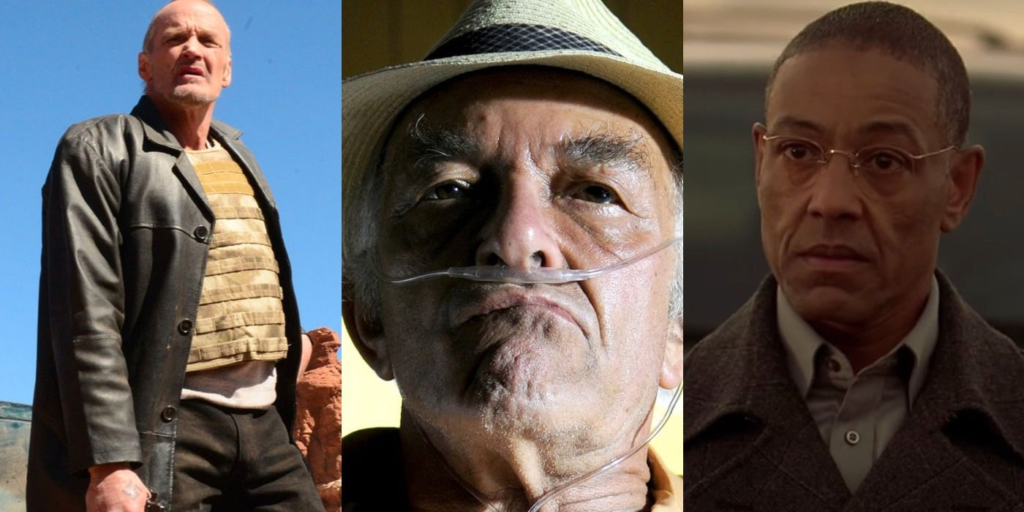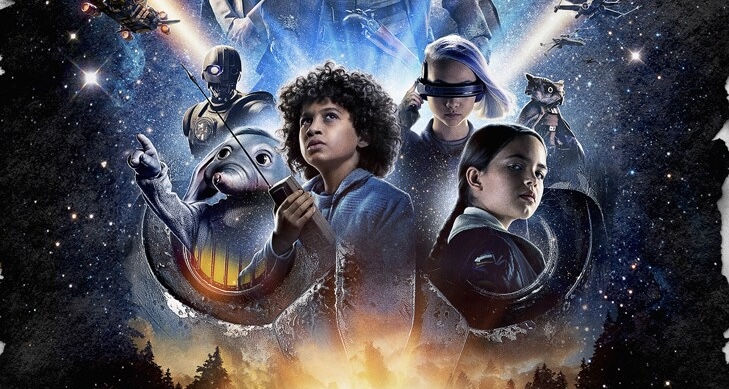Vince Gilligan’s Breaking Bad stands as an indelible masterpiece in the annals of television history. Premiering in 2008 and concluding in 2013, this AMC series unfolded as a riveting exploration of one man’s descent into the criminal underworld and the profound moral consequences that ensued. From its meticulously crafted characters to its dynamic narrative arc, Breaking Bad not only shattered conventions but also elevated the medium of television to new heights.

At the heart of the series is Walter White, brilliantly portrayed by Bryan Cranston. A high school chemistry teacher turned methamphetamine manufacturer, Walter’s transformation from a mild-mannered family man to the ruthless drug lord known as Heisenberg is the narrative linchpin. Cranston’s nuanced performance earned him critical acclaim, and his portrayal of Walter White remains a benchmark for character evolution in the realm of television.
The show’s narrative is a masterclass in tension and suspense. Gilligan, along with a team of skilled writers, constructed a plot that deftly combined character-driven drama with high-stakes action. The pilot episode, with its opening scene of a desperate, pants-clad Walter driving an RV through the desert, immediately signaled that Breaking Bad would be a rollercoaster of moral ambiguity and unforeseen consequences.

Central to the show’s success is its exploration of morality. Walter White’s journey is a compelling study of how a seemingly ordinary man can be driven to extremes when faced with a terminal illness and the looming specter of financial ruin. As viewers, we are compelled to question our own moral compass as we witness Walter’s gradual descent into the criminal underworld. The moral shades of gray painted throughout the series challenge traditional notions of good and evil, making it one of the most morally complex narratives in television history.
Equally integral to Breaking Bad’s success is its ensemble cast. Aaron Paul’s portrayal of Jesse Pinkman, Walter White’s former student and partner in crime, is a standout performance that earned him widespread acclaim, including several Emmy Awards. The chemistry between Cranston and Paul brought an emotional depth to the series, and Jesse’s character arc, marked by tragedy and redemption, resonated profoundly with audiences.

The show’s villains are equally memorable. Giancarlo Esposito’s Gustavo Fring is a chilling and calculated antagonist, while Jonathan Banks’s Mike Ehrmantraut provides a stoic and pragmatic foil to Walter White’s increasingly erratic behavior. These characters, along with an array of memorable supporting roles, contribute to the richness of the Breaking Bad universe.
One of the show’s narrative triumphs is its ability to balance intense drama with moments of dark humor. Gilligan and his team skillfully interweave moments of levity into the tense narrative, providing brief reprieves from the mounting tension. This delicate balance adds a layer of complexity to the storytelling, preventing the series from becoming an unrelenting descent into darkness.
The cinematography of Breaking Bad is a visual feast that complements the thematic richness of the narrative. The use of color, symbolism, and visual motifs enhances the storytelling, with the transformation of Walter White visually represented through his evolving wardrobe and the shifting color palette of the series. The show’s desert landscapes and distinctive locations become integral elements of its visual identity.

As the series hurtles toward its conclusion, the tension reaches a fever pitch. The final episodes, particularly “Ozymandias,” are hailed as some of the most intense and emotionally charged moments in television history. The culmination of Walter White’s journey and the fallout from his actions reverberate through the narrative, delivering a cathartic and unforgettable conclusion.
Breaking Bad also excels in its exploration of consequences. Every action, no matter how seemingly inconsequential, ripples through the narrative, creating a web of cause and effect. The show eschews conventional storytelling tropes, subverting audience expectations and delivering narrative twists that are both shocking and inevitable in hindsight.
The series’ cultural impact extends beyond its critical acclaim. Breaking Bad ignited discussions about the golden age of television, influencing subsequent shows that aspired to its level of storytelling and character development. The iconic blue meth, Heisenberg’s hat, and catchphrases like “Say my name” have become embedded in popular culture, a testament to the show’s enduring legacy.

However, Breaking Bad is not without its detractors. Some have criticized the show for its portrayal of female characters, arguing that they are often relegated to secondary roles or subjected to tragic fates. While the series does have notable female characters, such as Skyler White (Anna Gunn) and Lydia Rodarte-Quayle (Laura Fraser), the criticism raises valid points about the industry-wide challenges of gender representation in television.
Breaking Bad remains a landmark achievement in the evolution of television storytelling. Vince Gilligan’s vision, coupled with stellar performances, meticulous writing, and breathtaking cinematography, created a narrative that transcends its crime drama genre. The moral complexity, character evolution, and narrative tension make Breaking Bad a timeless exploration of the human condition, leaving an indelible mark on the landscape of television storytelling. As Walter White’s journey unfolds against the backdrop of the New Mexican desert, Breaking Bad stands as an enduring testament to the transformative power of storytelling in the golden age of television.




